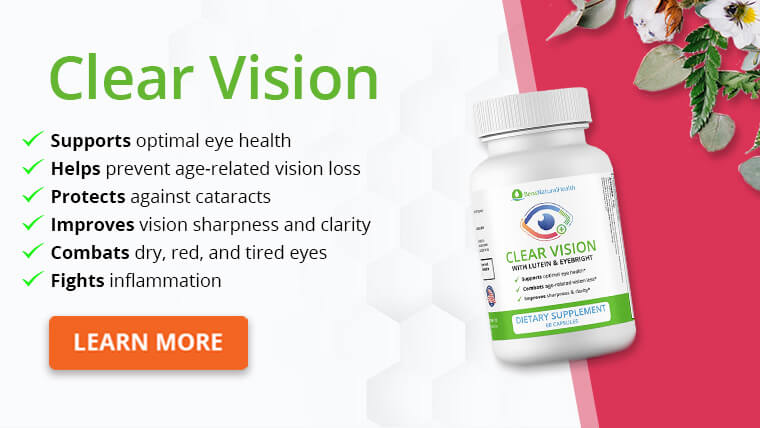The eyes are crucial for the quality of life. While not essential to live, failure to see well can cause physical impairment. A person becomes more susceptible to falls and bumping into sharp objects.
There is a large number of conditions that can affect the eyes. Some of these conditions are less invasive during the earlier stages. They may lead to dryness and sensitivity. Failure to initiate treatment, however, could lead to serious consequences.
According to the CDC, about 12 million individuals in the US have some type of vision impairment. These statistics account for adults who are older than 40. The number continues to grow when looking at all age groups and when considering the global population.
Cataracts are common issues in the adult population. The risk is greater among older individuals. There are effective treatment options available. Failure to initiate treatment, however, can lead to the development of complications.
In this post, we take a look at what cataracts are. We will share a few of the most common symptoms to look out for and consider when a consultation with the doctor is due.
Get Your FREE Eye Health Diet Plan
- Nine most important vitamins for eye health
- How to naturally protect and improve your eye health as you age
- Developed exclusively by our medical doctor
What Are Cataracts?
Cataract is a term used to describe an eye condition. The condition is more prevalent among older individuals. The risk for cataracts continues to rise as the person ages. It’s often referred to as clouding of vision since cataracts cause a cloudy interference with the patient’s ability to see.
The risk for cataracts generally starts at about 40. Following this age, there is a significant increase in the risk for every decade of age. By 50, the risk is almost double, for example. Among white adults over 80 years of age, at least 70% have cataracts in one or both eyes.
When a cataract develops, there is a clouding on the outer lens of the patient’s eye. In many cases, only one eye is affected by the cataract. Some patients, however, experience cataracts in both eyes.
Patients usually describe the condition as if they are looking for a window that is fogged up.
There are several concerns related to cataracts. Vision problems during driving can lead to higher risks of accidents. Vision tends to be more significantly impaired at night.
A cataract will usually not develop rapidly. Instead, it continues to develop at a slow pace. This is why it is so important to take appropriate action at an early stage. Over time, the development of cataracts causes interference with the patient’s vision.
Initial treatments are non-invasive and focus on improving vision. Glasses may be provided to the patient. The patient is advised to try and remain under stronger lighting conditions too. Both of these strategies help, but only when the cataracts are not severe. With time, many patients are advised to undergo surgery for their cataracts.

What Are The Symptoms Of Cataracts?
Recognizing symptoms of cataracts early on is important. During early-stage cataracts, it will usually be easier to initiate a treatment program.
There are a few symptoms that can signal the presence of a cataract. Some symptoms are not as obvious as others. Even when small symptoms that seem insignificant at the time develops, it may be a good idea to still see an optometrist.
Some symptoms associated with cataracts are common and obvious. Others, however, may be less obvious. The patient may take the symptoms of a posterior subcapsular cataract for another condition as an example.
We will be looking at a list of seven symptoms that signal the presence of a cataract below. Take note of these symptoms. When they develop, it is crucial to seek a consultation with an eye doctor.
1) Cloudiness In Your Vision
The most common telltale sign that a patient has a developing cataract is cloudiness in their vision. This is often also the sign that makes it hard for people to see expressions on a friend’s face. The cloudiness can cause a significant disruption in a person’s vision.
Driving with cloudy vision can be dangerous. Vision tends to be much more obstructed at night. During this time, the patient has a much greater chance of being involved in an accident.
Cloudy vision in patients with a cataract will not develop abruptly. This is a slow-growing symptom. It can be hard to identify the cloudiness in vision during the early stages. As time goes by, the patient starts to feel like their eyes are “fogged up.”
Some patients say it feels like they are looking through a window that is dirty and foggy.
Over time, the fogginess in the affected eye becomes more developed. As it develops, a bigger area of the visual field tends to be affected. This is where additional problems tend to develop too.
2) Night Vision Problems
While humans do not have the same night vision as cats, we do still rely on our vision at night to help us navigate. There are several conditions and even eye diseases that can adversely affect night vision.
Cataracts are known to cause night vision problems. When the patient’s vision becomes cloudy, they are likely to find that seeing at night starts to get harder. One thing that many people note is difficulty dealing with oncoming traffic. The beaming lights from traffic can cause issues with eyes when they are affected by cataracts.
Patients do need to be careful when they have cataracts. Poor vision at night can make them more likely to be involved in an accident.
3) Double Vision
Double vision is a relatively common concern with various types of eye diseases. This symptom can disrupt a patient’s ability to read and conduct day-to-day tasks. This particular symptom is also called diplopia.
It should be noted there are a few differences in double vision caused by cataracts and a similar symptom caused by another condition.
With cataracts, the symptom is known as diplopia. Normally, problems that affect both eyes cause double vision. In this case, the symptom is present in both of the patient’s eyes. With diplopia, a single eye can cause double vision symptoms. The fogginess that develops on the eye’s lens may contribute to the double vision problems.
4) Color Alterations
We use color to help us remember things, identify specific factors in the office, and much more. Plus, color helps to paint a picture, whether on a hiking trip or when watching a video. With cataracts; however, there may be alterations in how a person sees colored objects.
At an early stage, the color alterations will not be as severe. It starts with a tint effect on the patient’s vision. Most patients explain their vision has a brownish filter. Some patients also find that this “filter” has a yellowish color instead.
At a later stage, the cataract may cause a more advanced disruption in the patient’s vision. Recognizing colors like blue and purple may become impossible for the person. This is because the brownish and yellowish colors become more prominent.
5) Glare
Another sign that a patient might have a cataract is glare. The glare is often accompanied by halos too. Different eye diseases can cause this particular symptom – cataracts are considered only one of these conditions.
With cataracts, glare is especially common at night. When the patient is driving at night, headlights from oncoming traffic may cause glare. Some patients see halos in their vision.
In some cases, sensitivity to the glaring may be experienced too.
6) Myopic Shift
Some symptoms can occur even before the cataract develops. Myopic shift is one of these symptoms.
Myopic shift is considered a temporary symptom. It would usually only last for a short period of time. A doctor will usually test a patient for cataracts if they experience a myopic shift.
With a myopic shift, there’s a shift in the patient’s vision. Perhaps the patient wears reading glasses. They find it hard to read words that are close to them. At a distance, however, no glasses are needed to observe items.
When a myopic shift occurs, there is a shift. For a temporary period, the patient would now no longer require glasses when they need to read. Their long-distance vision, however, will now become impaired. Thus, a pair of glasses will be needed if they wish to observe an object at a further distance.
7) Vision May Fluctuate
Another issue that people tend to face when there is a developing cataract is fluctuations in their vision.
It is generally recommended that a person goes for an eye examination every two years. For some, this should be more frequent. In most cases, there will only be slight differences in vision between the two sessions.
Among patients with cataracts, there may be a faster decline in vision. In fact, some patients may require a new, upgraded prescription for glasses sooner than the two-year mark.
When To See A Doctor
The first thing to note is that a patient should never delay an appointment with a doctor. Cataracts develop slowly. This makes some people think they can postpone consultation with a doctor. Unfortunately, this often causes too much of a delay. When a person waits too long, there are complications that can develop.
In these cases, less invasive treatments from the eye doctor may no longer work. Instead, cataract surgery may not be required.
Thus, when there are changes in a patient’s vision – be it cloudiness, double vision, or blurry vision, action should be taken immediately. Different cataracts exist, and the condition can be accompanied by another eye disease. A cortical cataract, for example, affects a patient different from another type. All cataracts do, however, lead to vision problems.
Can Cataracts Be Treated?
Once a cataract is identified, a doctor will consider the best treatment options. There are effective ways of dealing with the problem. This first step is for the doctor to determine the severity of cataracts.
A patient with cataracts at a very early stage will usually receive glasses. This can help to reduce some of the vision problems that come with cataracts. The patient will be advised to avoid driving in a low light condition. Furthermore, to help with vision, increased lighting may be recommended.
There are times where cataracts advance too much. These scenarios often mean the patient is unable to experience improvements with a pair of glasses. Cataract surgery may then be recommended to the patient. The purpose of the surgical procedure is to help remove cataracts from the eye.
In most cases, cataract surgery is considered safe. A majority of patients can recover effectively following the procedure. Recovery does, however, take a bit of time.
Patients need to note that the outer lens of the eye is replaced during this surgery. This is the only way to remove the cloudiness affecting the patient’s vision. Most patients can experience clear vision following the procedure. The surgical procedure’s risk profile is low, and most people do not experience serious complications or side effects.
Conclusion
The eyes are not only the windows to our souls but also the only element that allows us to see. Vision problems can cause a significant disruption in a person’s daily life. Cataracts, in particular, affects up to 70% of certain age groups. This clouding of the eye lens makes it hard to see. Treatment can help but is more successful when initiated at an early stage.






